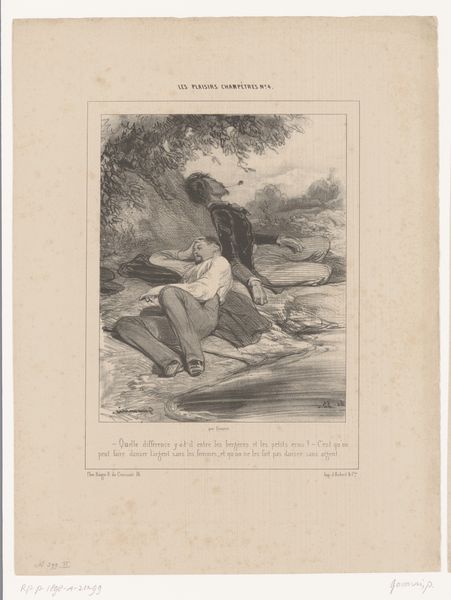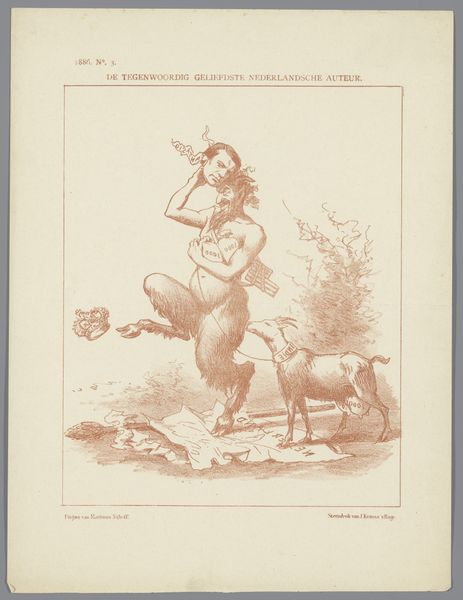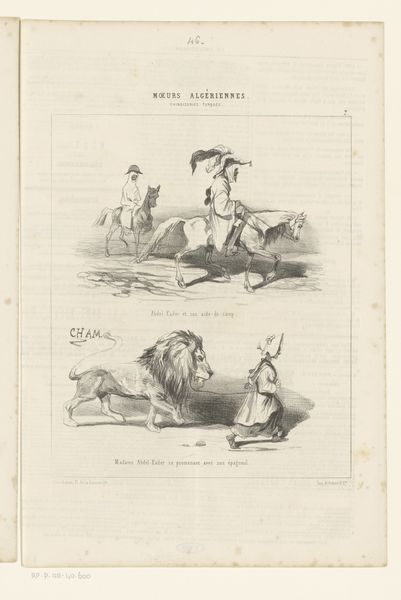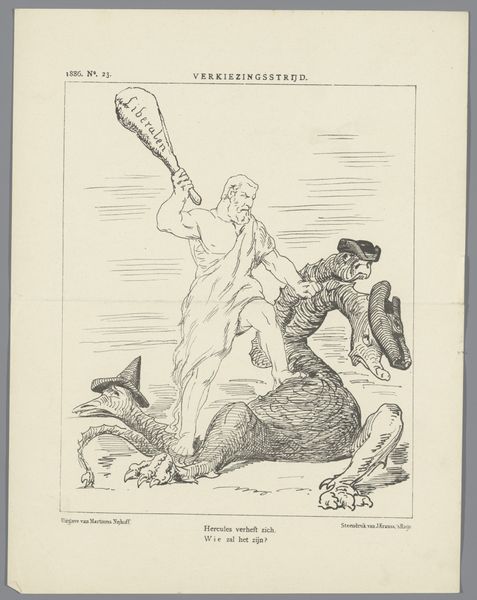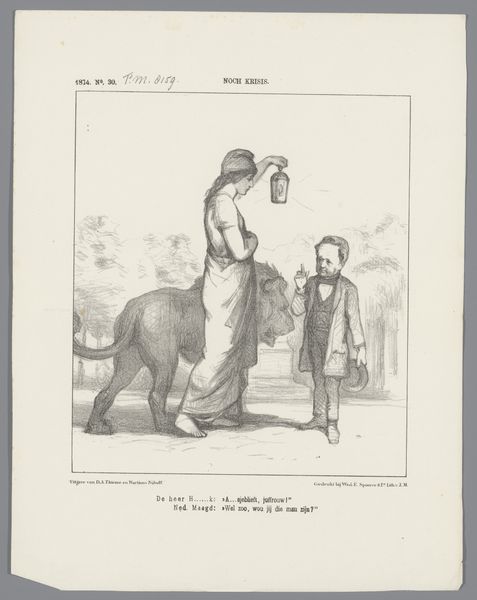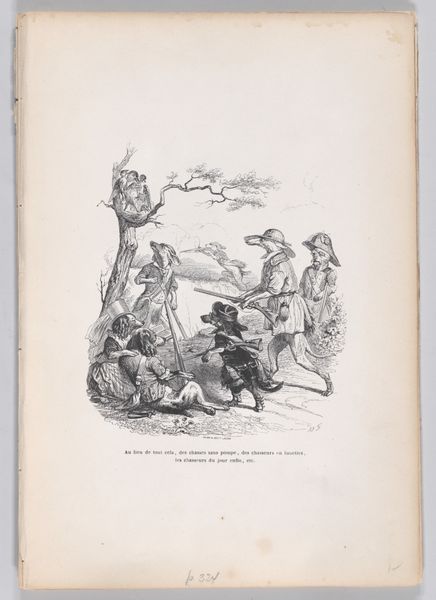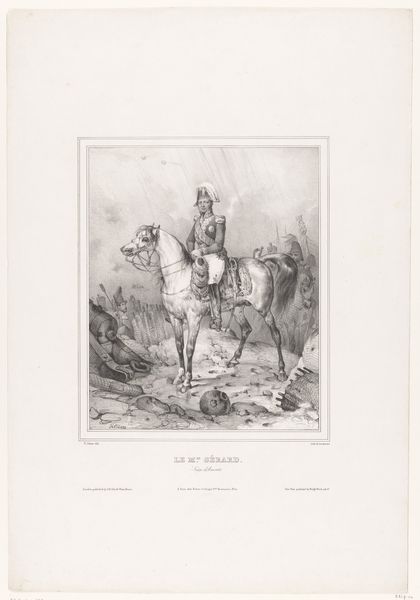
drawing, pencil
#
drawing
#
aged paper
#
toned paper
#
caricature
#
landscape
#
figuration
#
pencil
Dimensions: height 445 mm, width 300 mm
Copyright: Rijks Museum: Open Domain
This print, by John Doyle, depicts Lord Bentinck as the centaur Nessus. We see the iconic scene of Nessus carrying Deianira, his gaze full of lust, while Hercules stands on the shore, ready to strike. The centaur, a being half-man and half-horse, is a symbol deeply rooted in mythology, embodying the duality of human and animal nature. In ancient Greece, centaurs like Nessus were often associated with wildness and untamed passions. Yet, here, the centaur becomes a vehicle for political satire. Doyle uses this well-known mythological trope to comment on Bentinck's political actions. The abduction motif, as seen here, echoes throughout art history, from ancient friezes to Renaissance paintings. It speaks to the timeless themes of desire, power, and betrayal, engaging viewers on a subconscious level with its potent emotional charge. The centaur's lustful gaze and the woman's fearful pose tap into primal instincts, revealing the enduring power of such images across cultures. In essence, this print illustrates how classical motifs are never truly lost. They resurface, evolve, and take on new meanings, reflecting the cyclical nature of cultural memory.
Comments
No comments
Be the first to comment and join the conversation on the ultimate creative platform.

